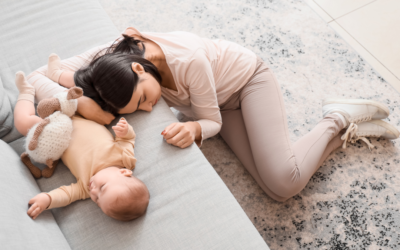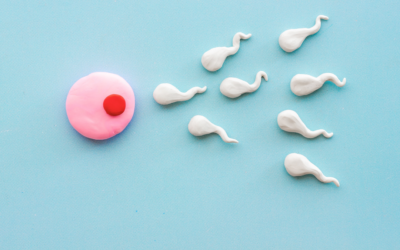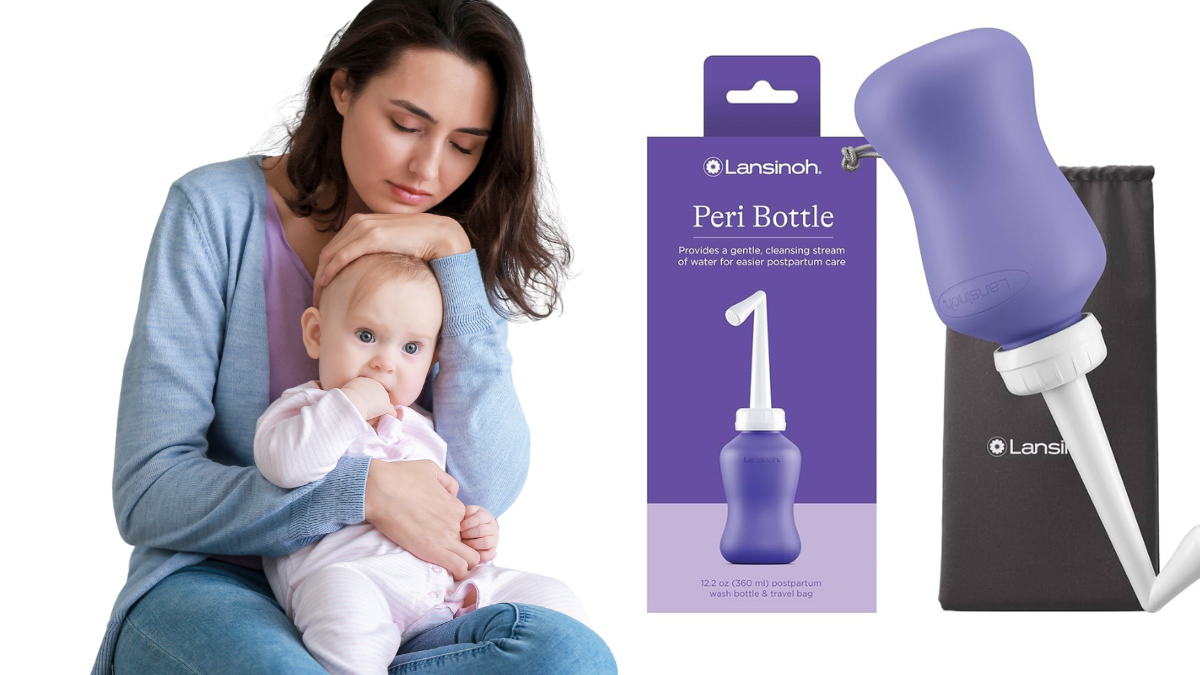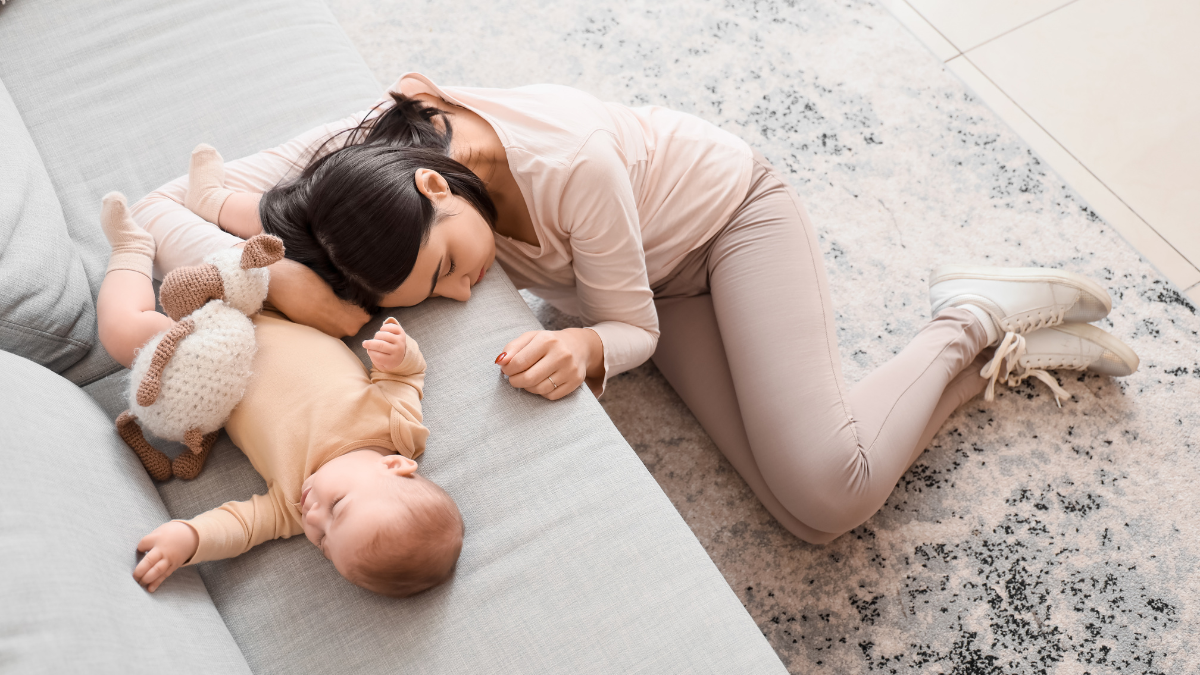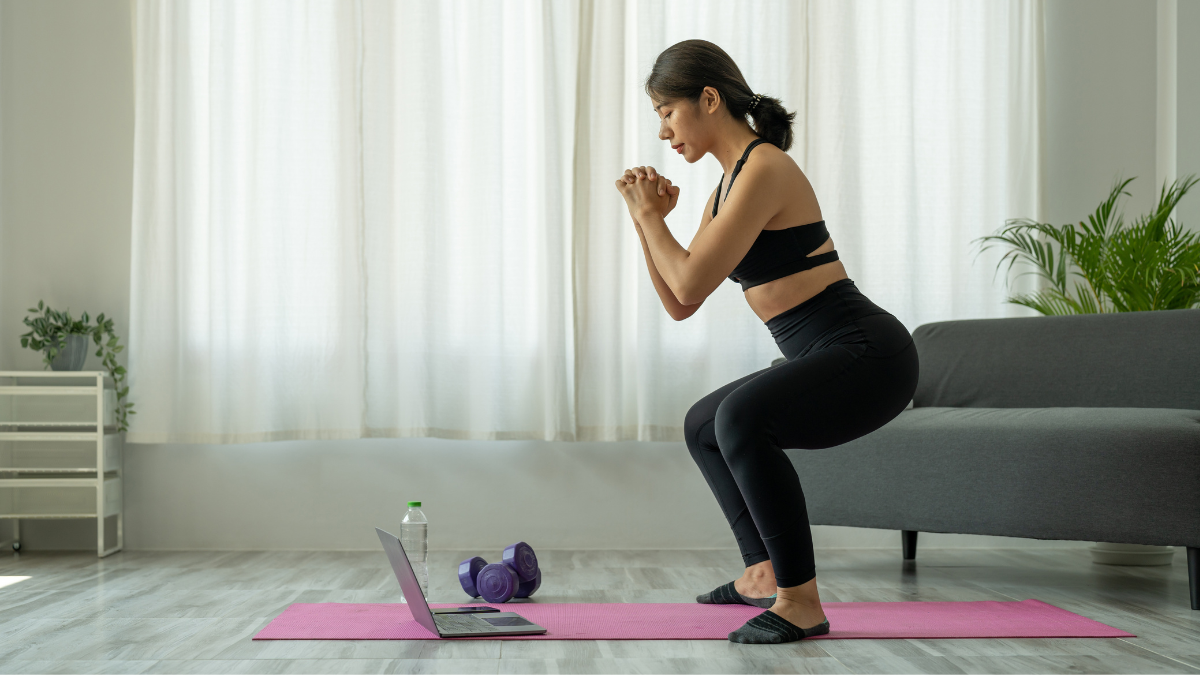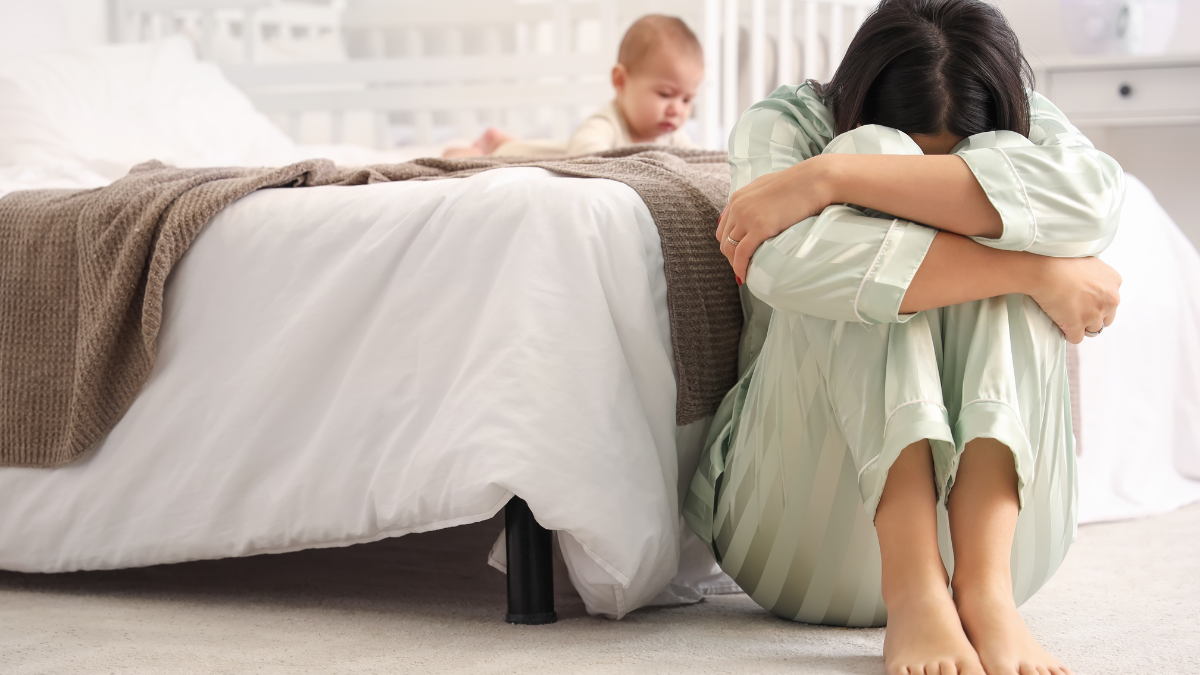Let’s be honest—postpartum recovery isn’t always glamorous. From soreness and swelling to stitches and discomfort, your body needs plenty of TLC after childbirth. That’s where a peri bottle for postpartum care comes in as a true lifesaver.
If you’re preparing for your postpartum journey, you’ve probably heard moms rave about the peri bottle for postpartum care—and for good reason! This simple tool can make a huge difference in how you feel after giving birth.
In this blog post, we’ll explore 7 must-know, life-changing benefits of using a peri bottle for postpartum care. Whether you’re a first-time mom or adding to your growing family, this handy little bottle can offer incredible comfort, speed up healing, and help you feel cleaner and more confident during those sensitive weeks after delivery.
Keep reading to find out exactly why every new mom swears by the peri bottle for postpartum care—and why it deserves a spot in your postpartum essentials kit!
Table of Contents
What Is a Peri Bottle?
A peri bottle—short for perineal irrigation bottle—is a simple, handheld, squeezable plastic bottle designed to help clean the perineal area after childbirth. It usually comes with a narrow, angled spout, allowing you to easily spray water onto your vaginal and anal area without needing to bend or strain.
The perineal area refers to the space between your vaginal opening and anus. After childbirth, this area often becomes swollen, tender, or sore due to stretching, tearing, or stitches from an episiotomy. Wiping with toilet paper can feel extremely uncomfortable—or may not even be safe—especially if you’ve had stitches or significant swelling. That’s where the Peri Bottle for Postpartum Care comes in.
Instead of wiping, you fill the peri bottle with warm water and gently squeeze it to spray the area clean. It acts as a soothing, cleansing tool that helps reduce irritation, ease discomfort, and maintain hygiene during those sensitive postpartum days.
Key Features of a Peri Bottle for Postpartum Care:
- Squeezable Design: Allows you to control the water pressure with a gentle squeeze.
- Angled Nozzle: Specifically shaped to make it easy to reach sensitive areas without awkward bending.
- Portable & Lightweight: Small enough to carry in your hospital bag or keep beside your toilet at home.
- Ergonomic Grip: Designed for comfort, even when your hands feel weak or shaky after childbirth.
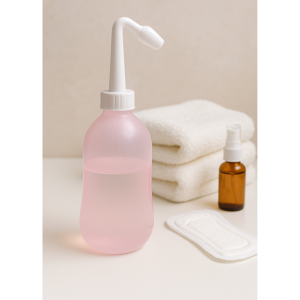
Uses of a Peri Bottle for Postpartum Care
A peri bottle is a simple but essential postpartum tool designed to ease hygiene and comfort after childbirth. Here’s how it’s commonly used:
- Gentle Cleansing: Cleanses sensitive perineal areas without needing to wipe with toilet paper.
- Soothe Perineal Tears & Stitches: Prevents irritation around stitches or swollen tissues.
- Reduce Burning Sensation: Eases discomfort from urine passing over sensitive skin.
- Hemorrhoid Care: Offers gentle cleansing for hemorrhoids, common after delivery.
- C-Section Incision Cleaning: Helps clean the area around the incision (when advised by a doctor).
- Postpartum Bleeding (Lochia) Care: Helps maintain hygiene during heavy bleeding days.
- Comfort During Urination: Reduces stinging by diluting the urine flow.
7 Must-Know, Life-Changing Benefits of Using a Peri Bottle for Postpartum Care
When it comes to postpartum recovery, every new mom needs tools that truly work, and one of the simplest yet most effective tools is the peri bottle for postpartum care.
Though it looks like a basic squirt bottle, it’s a total game-changer for postpartum healing, comfort, and hygiene.
Here are 7 must-know, life-changing benefits of using a peri bottle for postpartum care:
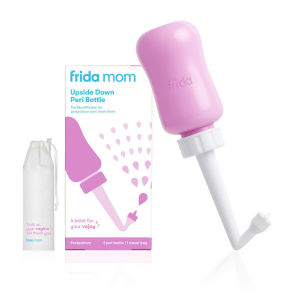
1. Pain-Free Cleaning Without Wiping
After childbirth, your perineal area can feel extremely tender, swollen, or even stitched. Using toilet paper may feel impossible.
A peri bottle for postpartum care lets you rinse gently with warm water—no wiping required.
✅ Why It’s Life-Changing:
- Soothes soreness instantly
- Prevents discomfort from rubbing
- Allows for easy cleaning even with stitches or tears
2. Eases Burning During Urination
Postpartum moms often feel a burning or stinging sensation while urinating, especially after vaginal delivery.
Using warm water from a peri bottle while peeing dilutes the urine and greatly reduces that stinging pain.
✅ Why It’s Life-Changing:
- Immediate relief from burning
- Makes bathroom trips less stressful
- Encourages better hydration (since peeing won’t hurt as much!)
3. Speeds Up Healing of Perineal Tears and Stitches
Cleanliness is essential for postpartum recovery, especially if you have stitches or tears.
Using a peri bottle regularly helps prevent bacteria from building up around the delicate perineal area, encouraging faster healing.
✅ Why It’s Life-Changing:
- Keeps wounds clean and infection-free
- Supports faster tissue recovery
- Helps stitches heal without complications
4. Reduces Swelling and Soothes Irritation
Swelling, inflammation, and general soreness are very common after childbirth.
Warm water from a peri bottle has a natural calming effect on swollen tissues, reducing inflammation and discomfort.
✅ Why It’s Life-Changing:
- Relieves pressure and puffiness
- Eases pain and calms irritation
- Can be enhanced with doctor-approved soothing ingredients like witch hazel
5. Maintains Hygiene During Postpartum Bleeding (Lochia)
Postpartum bleeding, known as lochia, can last for several weeks after giving birth.
A peri bottle makes it easy to gently rinse away discharge, blood, and sweat without wiping, helping you stay fresh and clean throughout the day.
✅ Why It’s Life-Changing:
- Makes cleanup easy during heavy bleeding
- Prevents odors and discomfort
- Encourages healthy, hygienic healing
6. Offers Relief from Hemorrhoids
Many moms experience hemorrhoids after delivery due to pressure during pregnancy and labor.
The peri bottle’s gentle stream helps clean the area without irritating already swollen tissues.
✅ Why It’s Life-Changing:
- Reduces itchiness and discomfort
- Helps manage hemorrhoids safely
- Provides cooling, soothing relief with warm or cool water
7. Simple, Fast, and Easy to Use Anytime
During postpartum recovery, it’s hard to juggle complicated routines. Thankfully, the peri bottle is extremely easy to use.
Whether at home or on the go, you just fill it, squeeze, and feel the soothing relief.
✅ Why It’s Life-Changing:
- Takes just seconds to use
- Requires no effort or bending
- Ideal for tired, sleep-deprived moms
How to Use a Peri Bottle for Postpartum Care: Step-by-Step Guide
Wondering how to use a peri bottle correctly and safely? Here’s your foolproof routine:
✅ What You’ll Need:
- A clean peri bottle
- Warm, clean water
- Soft towel or tissue
🚿 How to Use It:
- Wash your hands thoroughly.
- Fill the bottle with warm water (not hot).
- Position yourself on the toilet, slightly leaning forward.
- Aim the nozzle toward your perineum, from front to back.
- Gently squeeze while urinating or immediately after.
- Let the water rinse the area thoroughly.
- Pat dry gently with a soft, unscented tissue or towel.
- Rinse and dry the bottle after each use.
Use every time you go to the bathroom for at least the first 2–3 weeks postpartum—or longer if needed.
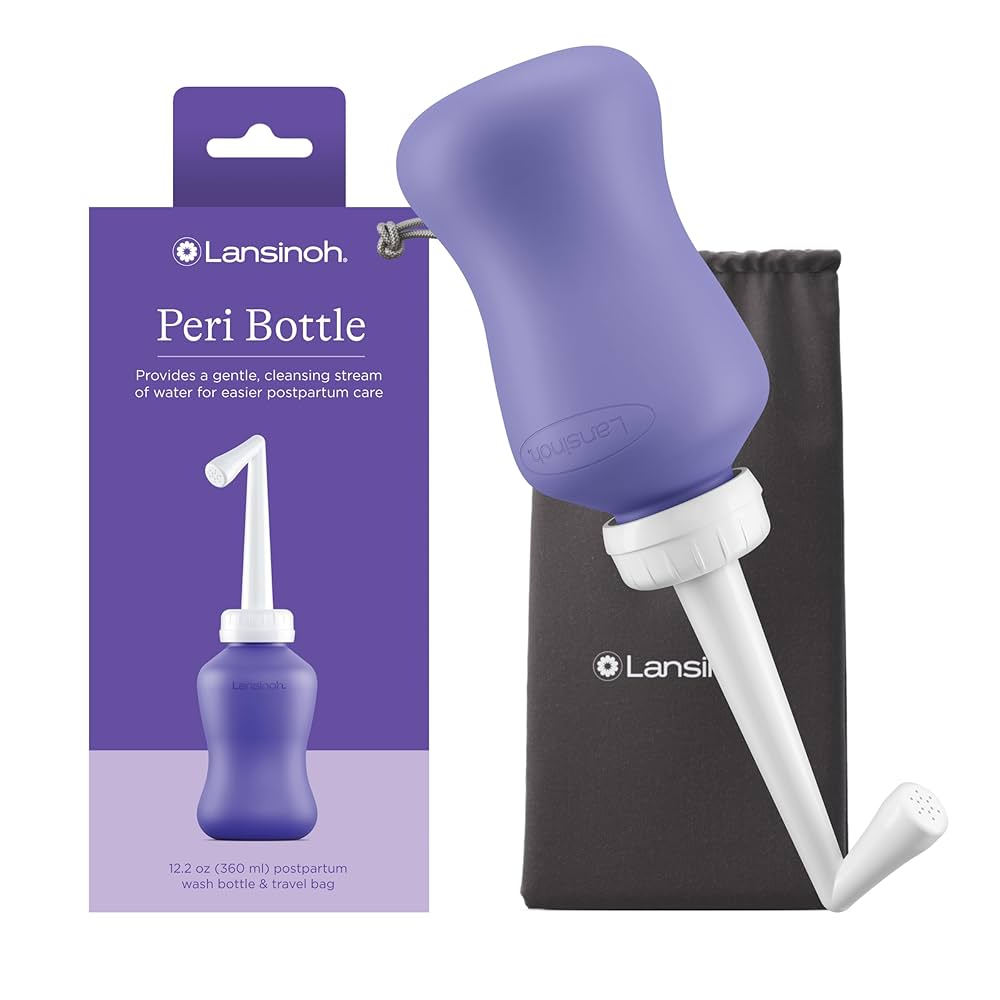
What Do You Put in a Peri Bottle?
While warm water is the gold standard, you can add a few safe, healing ingredients for extra comfort.
🌿 Common Additives:
- Warm Water: Best and safest.
- Witch Hazel: Reduces inflammation, but use only alcohol-free.
- Epsom Salt Solution: Aids healing (consult your doctor).
- Chamomile or Calendula Tea: Natural anti-inflammatory properties.
- Diluted Betadine or Antiseptic (if advised): Useful if you’re prone to infection.
⚠️ Avoid: Essential oils, alcohol-based products, harsh soaps, or scented ingredients.
How Long Should You Use a Peri Bottle for Postpartum Care?
Generally, most moms use a peri bottle for about 2 to 6 weeks postpartum or:
- Until stitches heal (if present).
- While perineal pain persists.
- As long as postpartum bleeding continues.
You can continue using it longer for comfort or during menstruation, if desired.
Impact of the Peri Bottle
The peri bottle has a positive physical and emotional impact on postpartum recovery:
Physical Impact:
- Reduces the risk of infection and irritation.
- Speeds up recovery of perineal tears or episiotomy stitches.
- Eases urination discomfort.
- Minimizes swelling and pain.
Emotional Impact:
- Provides a sense of control during recovery.
- Reduces anxiety about hygiene.
- Encourages better postpartum self-care habits.
Many moms even describe it as their “postpartum best friend.”
Causes for Needing a Peri Bottle
Here are common reasons moms need a peri bottle postpartum:
- Vaginal Delivery: Most common reason for using a peri bottle.
- Perineal Tears or Episiotomy: Cleansing sensitive stitched areas.
- Postpartum Bleeding (Lochia): Helps clean thoroughly during heavy flow.
- Hemorrhoids: Gentle care reduces discomfort.
- C-Section Recovery: Cleaning areas near the incision or for perineal comfort.
- General Swelling and Soreness: Reduces irritation from pressure or trauma.
Mistakes to Avoid When Using a Peri Bottle
Even though it’s simple to use, here are a few things to watch out for:
- ❌ Using hot water
- ❌ Not washing hands before use
- ❌ Spraying from back to front (can introduce bacteria)
- ❌ Forgetting to clean the bottle daily
- ❌ Using irritating ingredients
Peri Bottle Recipes for Postpartum Care
1. Simple Warm Water Peri Bottle Recipe (Most Common)
This is the most basic and safest option for all postpartum moms.
Ingredients:
- 1 peri bottle
- Warm (not hot), clean, filtered water
Instructions:
- Fill your peri bottle with warm water.
- Use after every bathroom visit to rinse from front to back.
- Pat dry gently with soft tissue or let air dry.
2. Herbal Healing Peri Bottle Recipe (Midwife-Approved)
Herbal blends can help speed healing and soothe inflammation.
Ingredients:
- 1 tablespoon dried calendula flowers
- 1 tablespoon dried chamomile flowers
- 1 tablespoon dried lavender flowers
- 2 cups boiling water
Instructions:
- Steep herbs in boiling water for 15–20 minutes.
- Strain well to remove all herbs.
- Let cool to a warm (comfortable) temperature.
- Pour into your peribottle.
- Use after each bathroom visit.
Benefits:
- Calendula: Speeds wound healing
- Chamomile: Soothes soreness and reduces swelling
- Lavender: Antibacterial and calming
3. Witch Hazel & Aloe Vera Recipe (For Hemorrhoids + Swelling Relief)
This blend cools, calms, and eases hemorrhoid discomfort.
Ingredients:
- 1 tablespoon alcohol-free witch hazel
- 1 teaspoon pure aloe vera gel
- Warm water to fill the bottle
Instructions:
- Add witch hazel and aloe vera to the bottle.
- Fill the rest with warm water.
- Shake gently to combine.
- Use after urinating or bowel movements.
Benefits:
- Witch hazel: Reduces inflammation and itching
- Aloe vera: Soothes irritated tissues
4. Epsom Salt Peri Bottle Recipe (For Soothing Soreness & Healing)
This is excellent for reducing swelling and promoting healing.
Ingredients:
- ½ teaspoon plain, unscented Epsom salt
- 1 cup warm water
Instructions:
- Dissolve Epsom salt in warm water fully.
- Let it cool to a comfortable temperature.
- Fill your bottle with the mixture.
- Use as needed.
⚠️ Limit Epsom salt use to once or twice per day unless advised by your provider.
5. Cooling Cucumber & Aloe Peri Bottle Recipe (For Instant Freshness)
A cooling recipe for hot, irritated postpartum days.
Ingredients:
- ½ cucumber, peeled and blended
- 1 teaspoon pure aloe vera
- ½ cup cooled boiled water
Instructions:
- Blend cucumber and strain to remove pulp.
- Mix cucumber water, aloe vera, and cooled water.
- Pour into a bottle.
- Use for a cooling, soothing rinse (test a small area first).
Important Tips for All Peri Bottle Recipes:
- Always test the temperature before using.
- Make fresh batches daily to avoid bacteria.
- Store unused mixtures in the fridge and warm before use.
- Discontinue if irritation occurs.
- Never add essential oils—they can burn sensitive tissues.
✅ Pro Tip:
For added relief, many moms keep an extra bottle in the fridge for a cool rinse on particularly sore days.
Quick Comparison Table:
| Recipe Type | Main Benefits | Best For |
|---|---|---|
| Warm Water | Gentle Cleansing | All Moms |
| Herbal Healing | Reduces Inflammation | Perineal Tears/Stitches |
| Witch Hazel + Aloe | Hemorrhoid Relief | Swelling, Hemorrhoids |
| Epsom Salt | Pain Relief, Healing | Soreness, Minor Tears |
| Cucumber + Aloe | Cooling & Refreshing | Hot/Swollen Days |
Frequently Asked Questions
1. What is a peri bottle used for in postpartum care?
A peri bottle is used to gently clean the perineal area after childbirth. It helps rinse away urine, blood, and discharge without wiping, which can be painful after delivery.
2. Do I really need a peri bottle after giving birth?
Yes! Most postpartum moms find a peri bottle extremely helpful for cleaning after using the bathroom, reducing pain during urination, soothing perineal soreness and swelling, and supporting healing of stitches or tears.
3. How do I use a peri bottle correctly?
Fill the bottle with warm water (not hot), aim the nozzle at the perineal area from front to back, gently squeeze while urinating or after using the bathroom, and pat dry or air dry afterward.
4. How often should I use a peri bottle after birth?
You can use it after every bathroom visit, whenever you feel soreness or discomfort, and until postpartum bleeding (lochia) stops and tissues heal, usually 4 to 6 weeks.
5. Can I put anything besides water in my peri bottle?
Yes, but only with your doctor’s approval. Some safe options include witch hazel (alcohol-free), herbal teas like chamomile or calendula, Epsom salt (in small amounts), and aloe vera (pure, natural). Avoid essential oils, harsh soaps, or alcohol-based products.
6. Will hospitals provide a peri bottle after delivery?
Most hospitals give a basic peri bottle to new moms after birth. However, many moms prefer ergonomic or angled peri bottles like the Frida Mom Washer for easier use.
7. Can I reuse my peri bottle for future pregnancies or menstruation?
Yes! Peri bottles are reusable. Just clean them thoroughly after each use, sterilize between postpartum periods or before storing long-term, and replace if the nozzle gets damaged or moldy.
8. Can I use a peri bottle after a C-section?
Absolutely! While you won’t use it near your incision, you can still use a peri bottle to cleanse the perineal area during postpartum bleeding and ease urination discomfort.
9. How long should I keep using my peri bottle?
Most moms use it for 4 to 6 weeks postpartum. You can continue longer if you still experience soreness, have hemorrhoids, or feel more comfortable using it.
10. How do I clean my bottle?
Wash the bottle with warm water and mild, unscented soap daily. Air dry fully before storing. Sterilize it occasionally by soaking in boiling water (if the material allows).
11. Can I use cold water in my peri bottle for postpartum care?
Yes, you can use cold or cool water if it feels soothing, especially for swelling or hemorrhoids. However, most moms prefer warm water because it’s more comforting and helps relax muscles.
12. Is it safe to add essential oils to a peri bottle?
No, essential oils are not recommended for peri bottles. They can irritate the sensitive perineal tissue and may cause burning or allergic reactions, especially postpartum.
13. How many peri bottles do I need after childbirth?
One peri bottle is usually enough, but many moms prefer having two—one for home use and one for the diaper bag or bathroom on another floor for convenience.
14. Can I use a peri bottle during my menstrual period?
Yes, peri bottles are very useful during menstruation for gentle cleansing and reducing irritation from frequent pad use. Many women continue to use them long after postpartum recovery.
15. When should I stop using the peri bottle completely?
You can stop using your peri bottle when you feel fully healed, have no discomfort during bathroom visits, postpartum bleeding has stopped, and your perineal area feels normal again. This usually happens around 4 to 6 weeks postpartum, but can vary for each mom.
